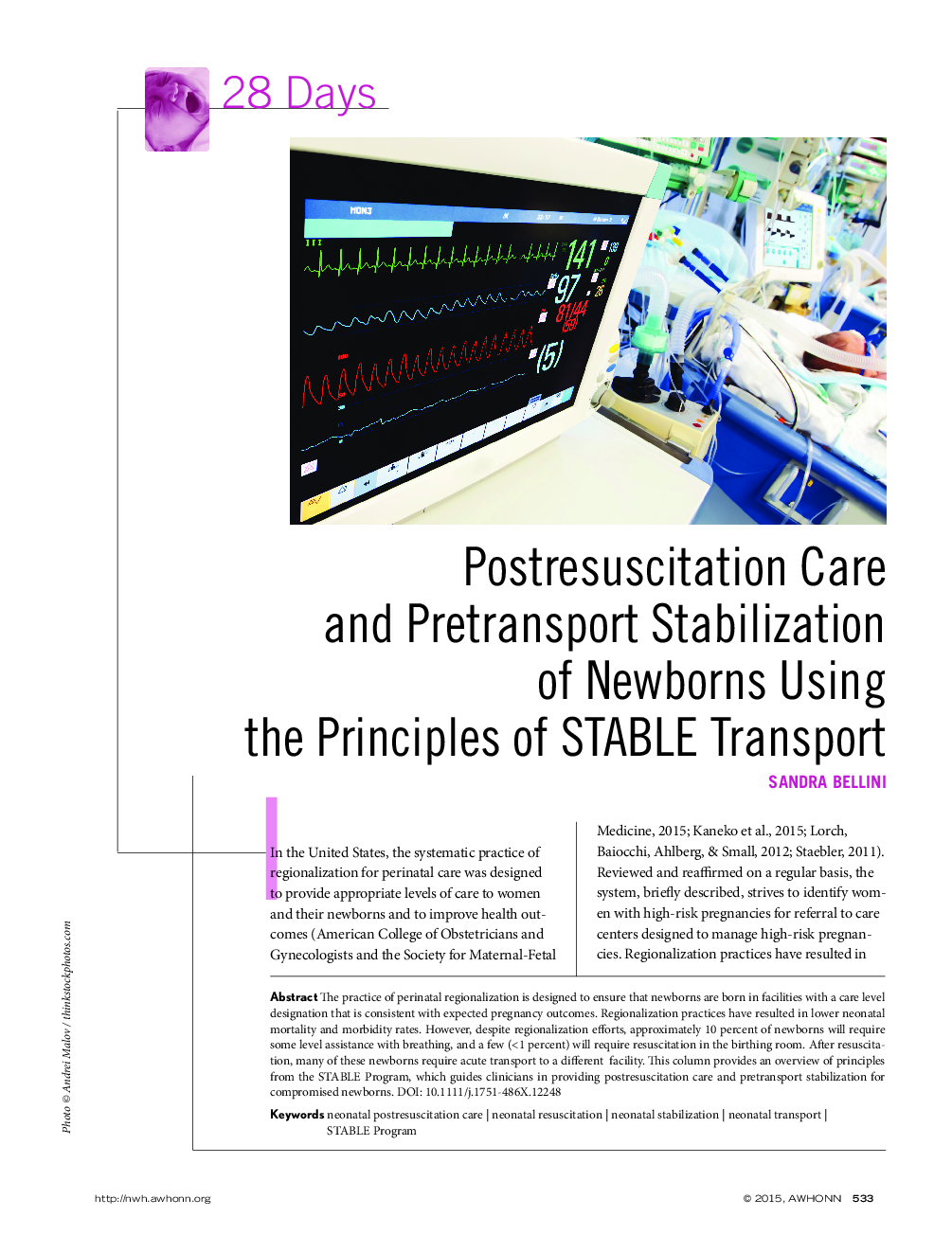| Article ID | Journal | Published Year | Pages | File Type |
|---|---|---|---|---|
| 2634299 | Nursing for Women's Health | 2016 | 4 Pages |
Abstract
The practice of perinatal regionalization is designed to ensure that newborns are born in facilities with a care level designation that is consistent with expected pregnancy outcomes. Regionalization practices have resulted in lower neonatal mortality and morbidity rates. However, despite regionalization efforts, approximately 10 percent of newborns will require some level assistance with breathing, and a few (<Â 1 percent) will require resuscitation in the birthing room. After resuscitation, many of these newborns require acute transport to a different facility. This column provides an overview of principles from the STABLE Program, which guides clinicians in providing postresuscitation care and pretransport stabilization for compromised newborns.
Related Topics
Health Sciences
Medicine and Dentistry
Obstetrics, Gynecology and Women's Health
Authors
Sandra (associate clinical professor),
